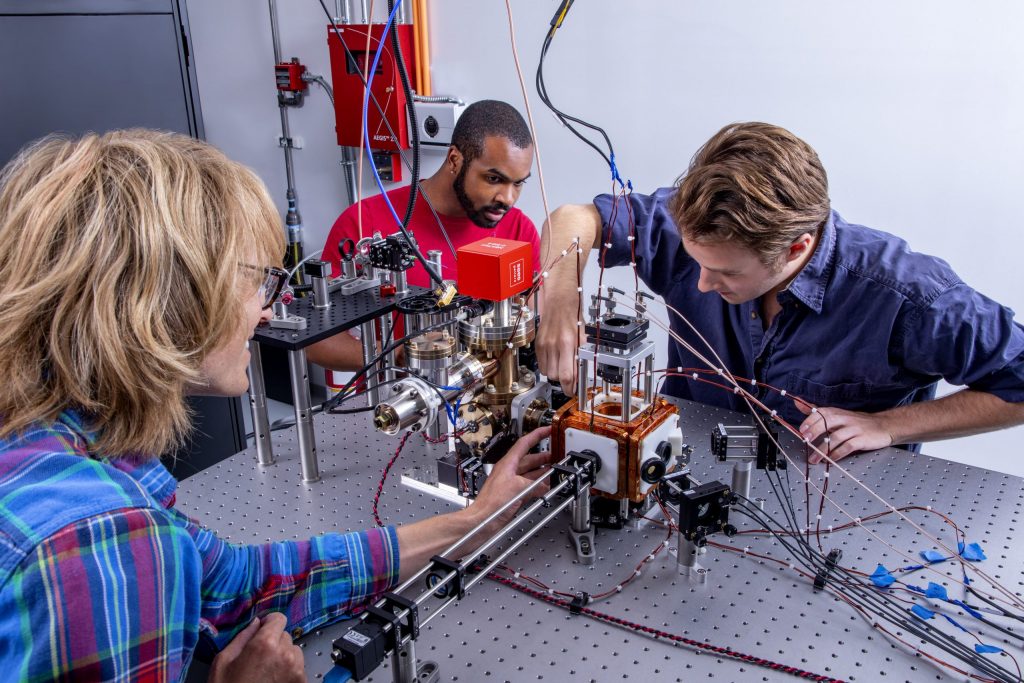QuEra Computing’s 256-qubit neutral-atom quantum computer, Aquila, is now available through the Amazon Braket cloud service, making it the first neutral-atom machine to be publicly available on a major cloud service.
Amazon pledged almost a year ago to have QuEra’s system available on its service sometime this year.
Though there are a handful of other developers of neutral-atom quantum computers–the other well-known names include ColdQuanta, Atom Computing, and Pasqal–but Boston-based QuEra, which earlier this year contributed key research in the field, claimed there are a number of attributes that differentiate Aquila from competing systems.
The company said Aquila offers flexible reconfiguration of its qubit positioning, a feature that is comparable to designing a new chip layout for each computation. It also leverages Bloqade, an open-source software package that assists with expressing problems.
The company further told IQT News via email that Aquila “has a distinctively different architecture, known as an analog processing mode. It is based on the capacity to reconfigure the positions and connectivity of qubits to better conform with user requests. This allows a user-centric approach to creating algorithms, which enables users to customize the processor to their specific problem needs. QuEra holds the license to operate the technology, via a patent from the company founders. And the company’s roadmap includes the addition of digital functionality to this machine, which in time would allow Aquila to operate in analog, digital and hybrid modes.”
QuEra further provided an extensive break-down the differences between digital gate-based mode and analog mode:
“The digital gate-based mode breaks down a complex operation into a few elementary steps (known as gates) that operate on one or two qubits at a time and changes qubits between their two computational states. Sequences of gates change one computational state into another. When measured, the final state becomes a bitstring, which captures the outcome of the computation.
“In analog quantum computing, discrete time evolutions of few individual qubits (via 1 or 2-qubit gates) are substituted by a joint continuous and collective evolution of all qubits together. If this collective behavior can be controlled well enough, one can still have broad programmability. Naturally, controlling all qubits collectively in any possible way can be challenging. Therefore, in practice this approach does not easily function universally for all problems. However for some kinds of problems, where this type of qubit control is possible, it can lead us directly to answers without decomposing algorithms into elementary steps which is an advantage.
“In the digital gate-based mode, errors can be introduced at each step, and accumulate over the course of a computation. The analog mode suffers less from accumulation of faulty gates making it highly suitable for the early stage of maturity that quantum computing is in right now. Since there is a trade-off from universal control of each individual qubit, it also allows for much larger system sizes. QuEra’s accomplishment is to create a machine that can be highly programmable, for a wide range of applications, following the analog mode.
“Simply put, combined with simplified control requirements, the analog mode enables the efficient manipulation of much larger system sizes (higher qubit counts) with much less engineering.”
“Special purpose analog quantum devices are likely to outperform classical computation for direct simulation of other quantum systems before we realize a fault-tolerant, universal quantum computer,” said Ignacio Cirac, Director and Head of Theory Division, Max Planck Institute for Quantum Optics (MPQ), in a statement provided by QuEra. “In the Theory Division of MPQ we are very much looking forward to using the QuEra device on Amazon Braket, which enables our team of researchers to experiment and pursue new ideas in the field of analog quantum simulation.”
Dan O’Shea has covered telecommunications and related topics including semiconductors, sensors, retail systems, digital payments and quantum computing/technology for over 25 years.
